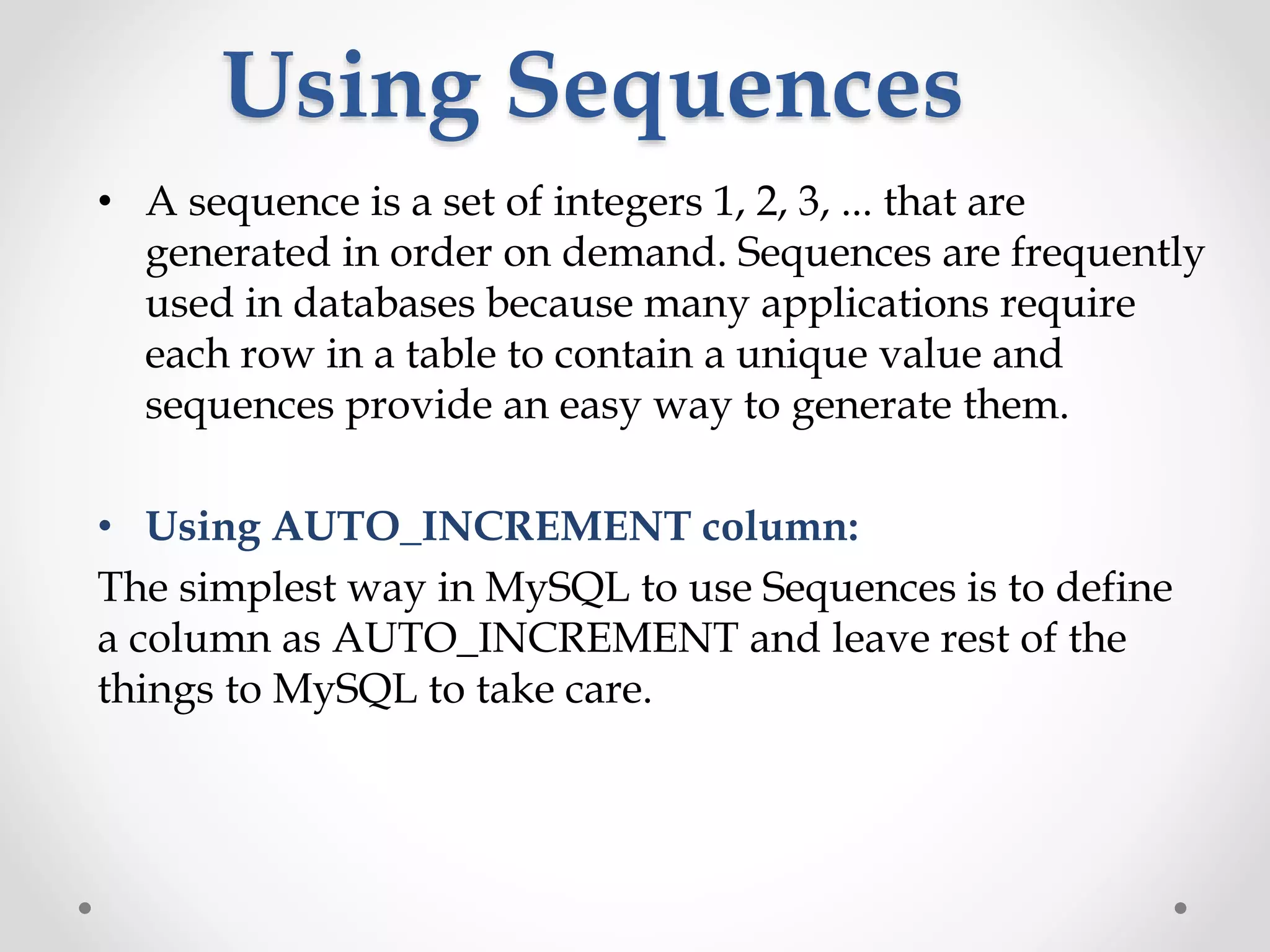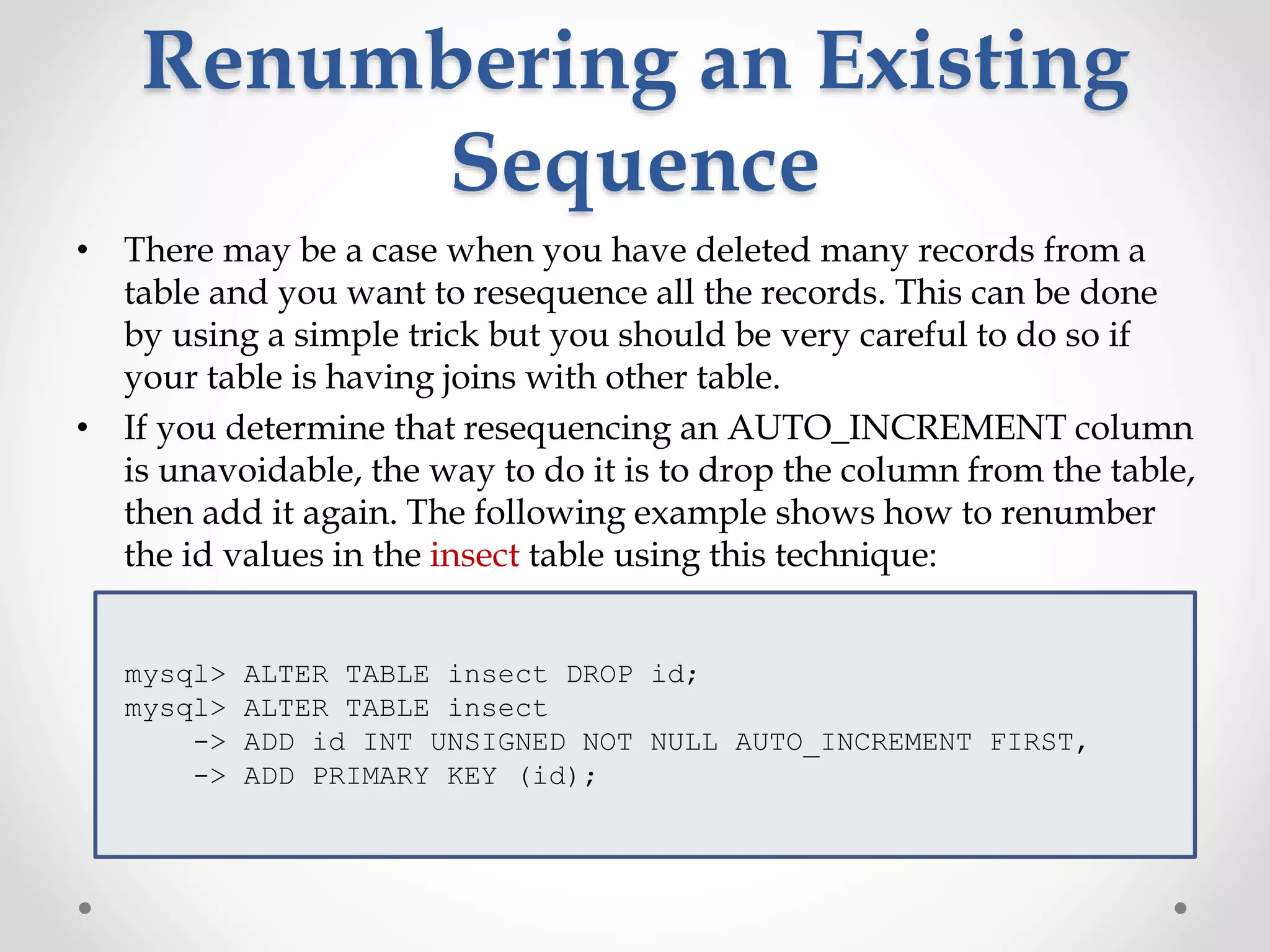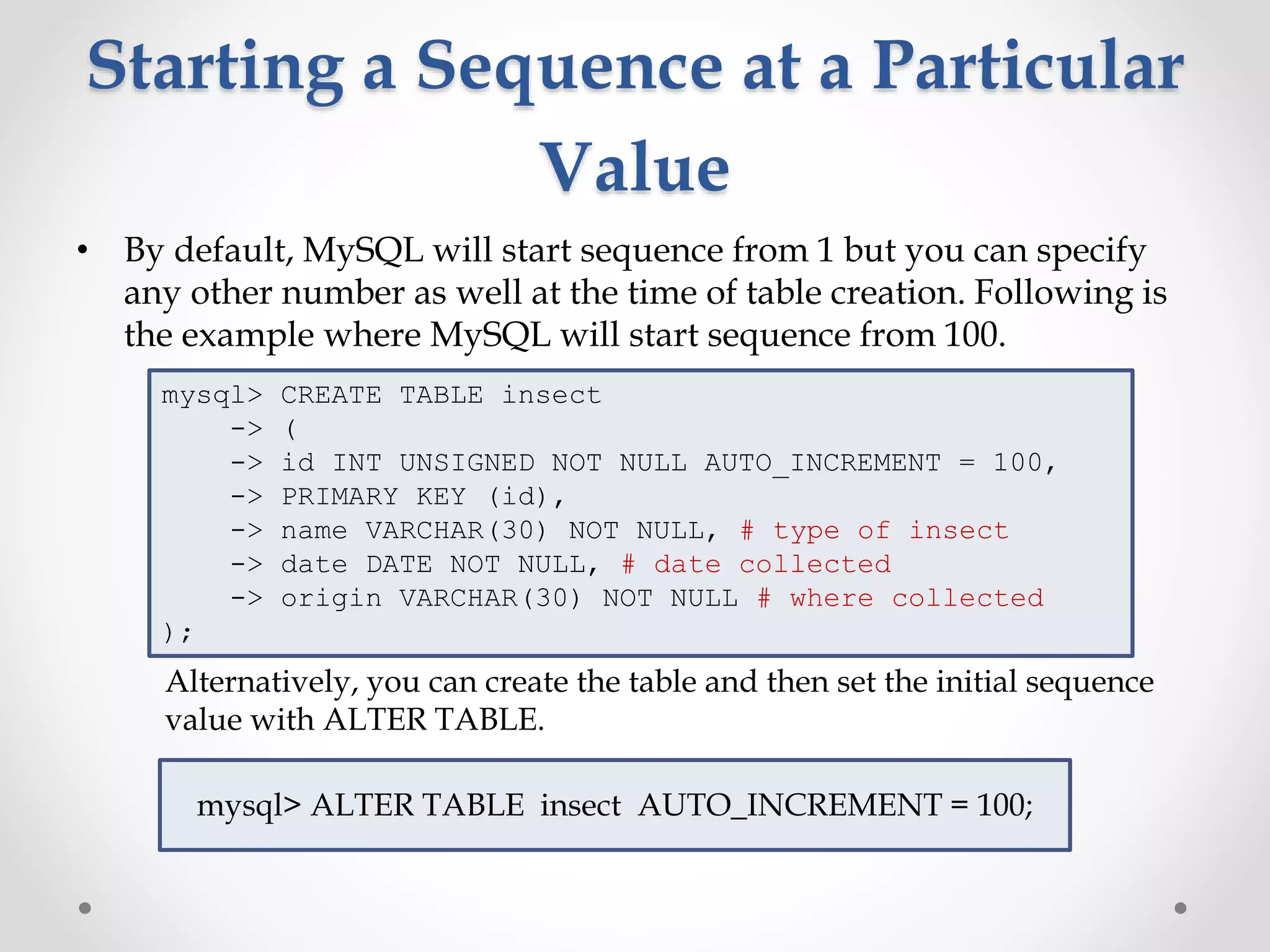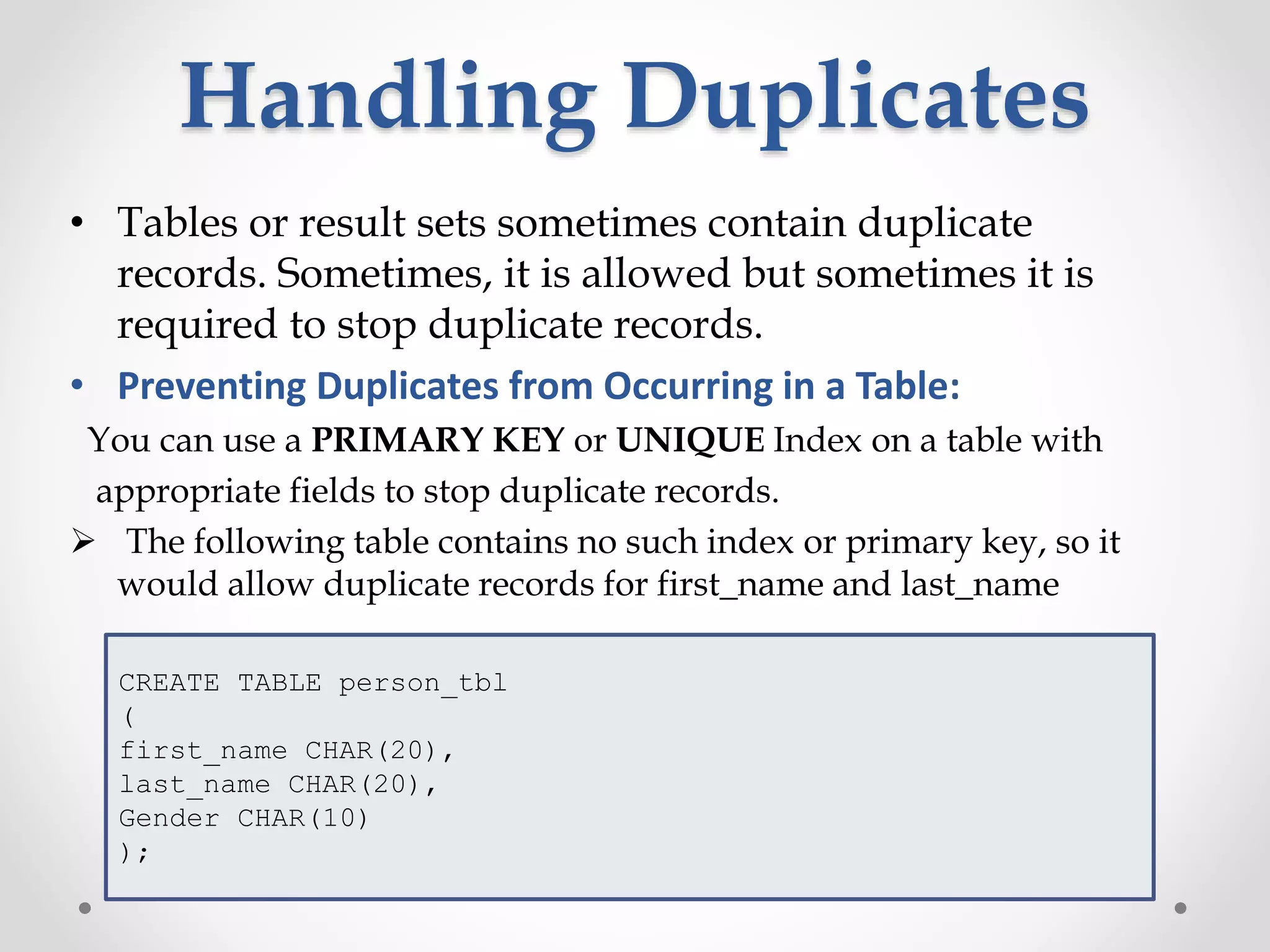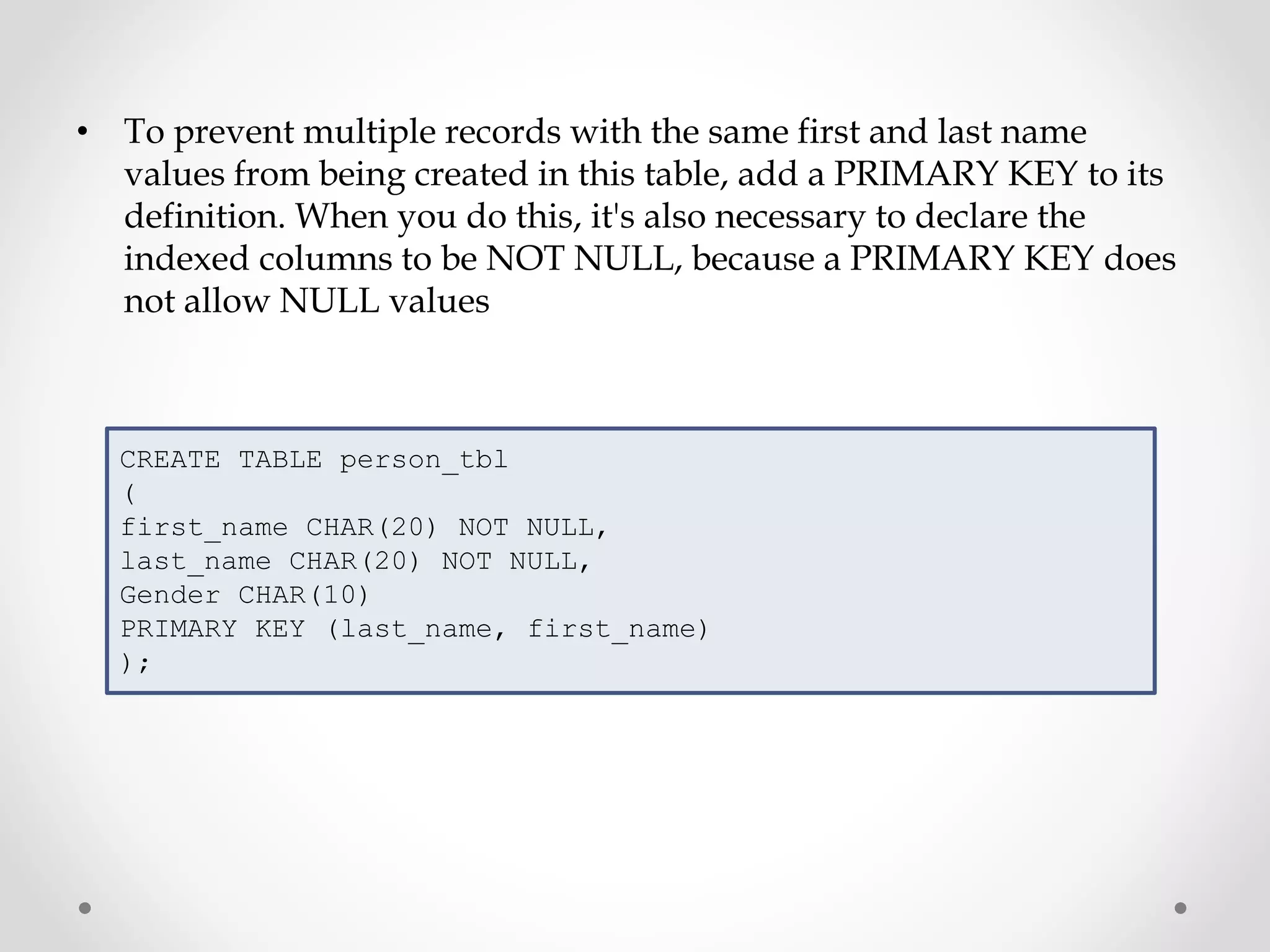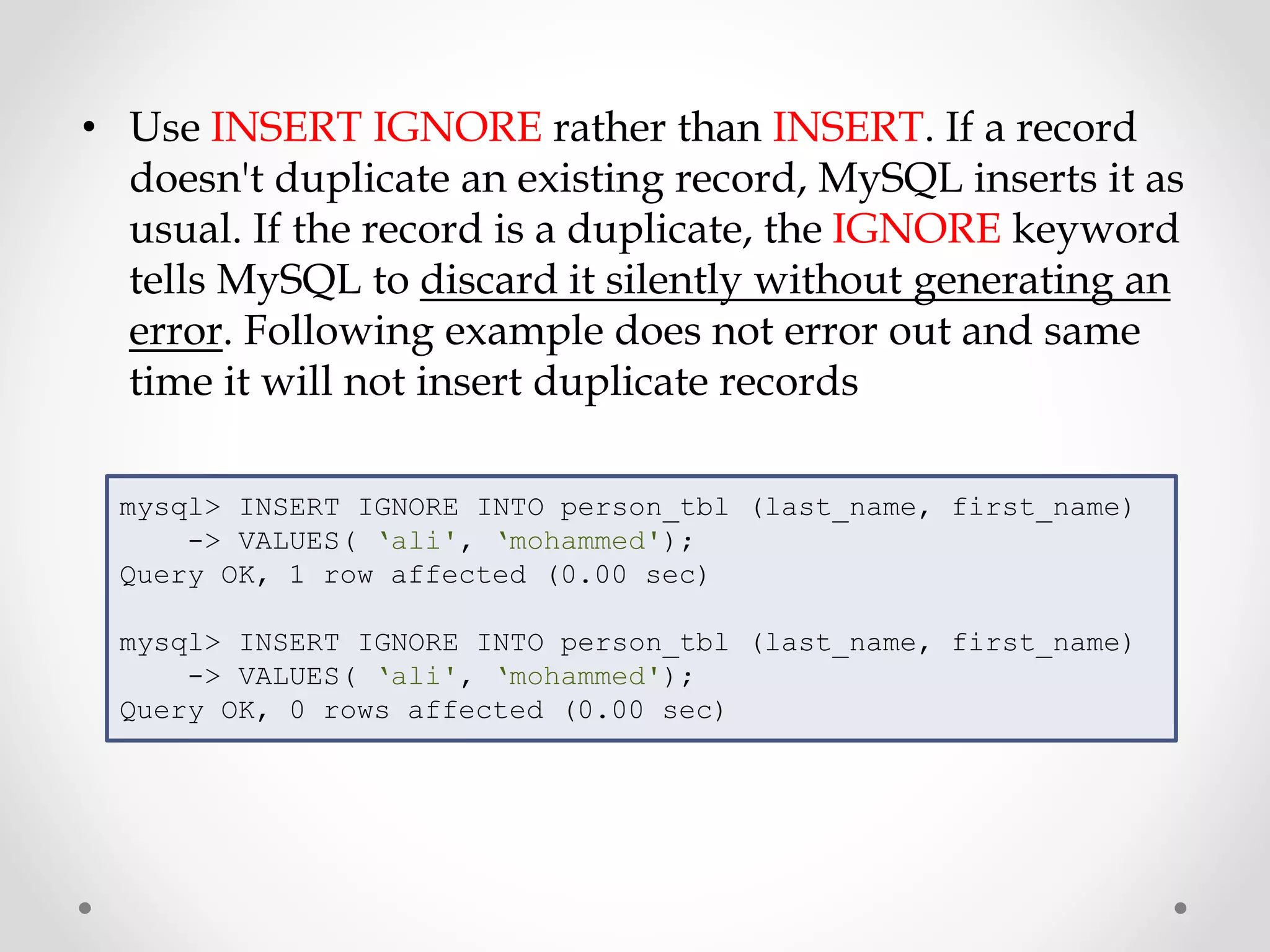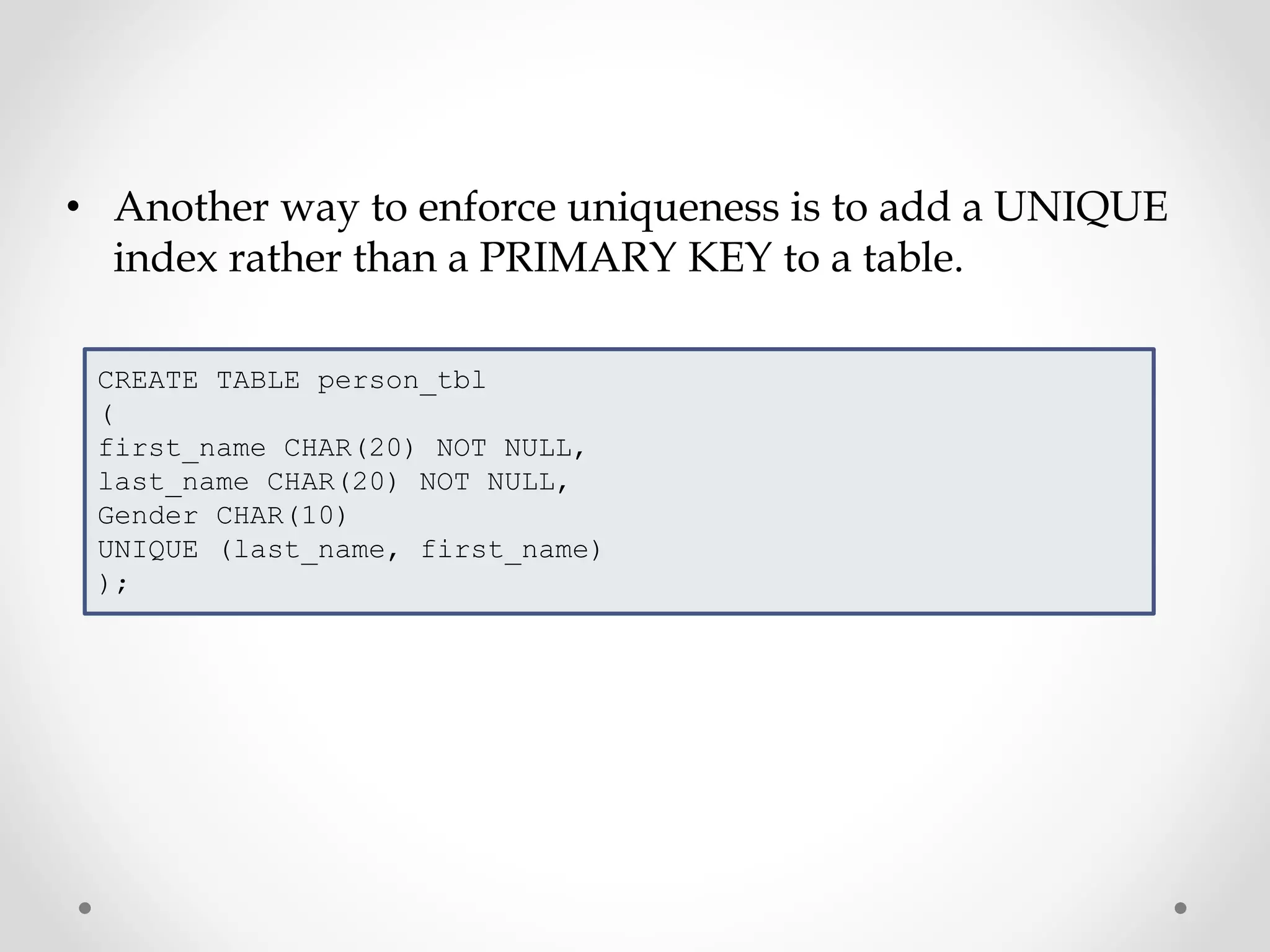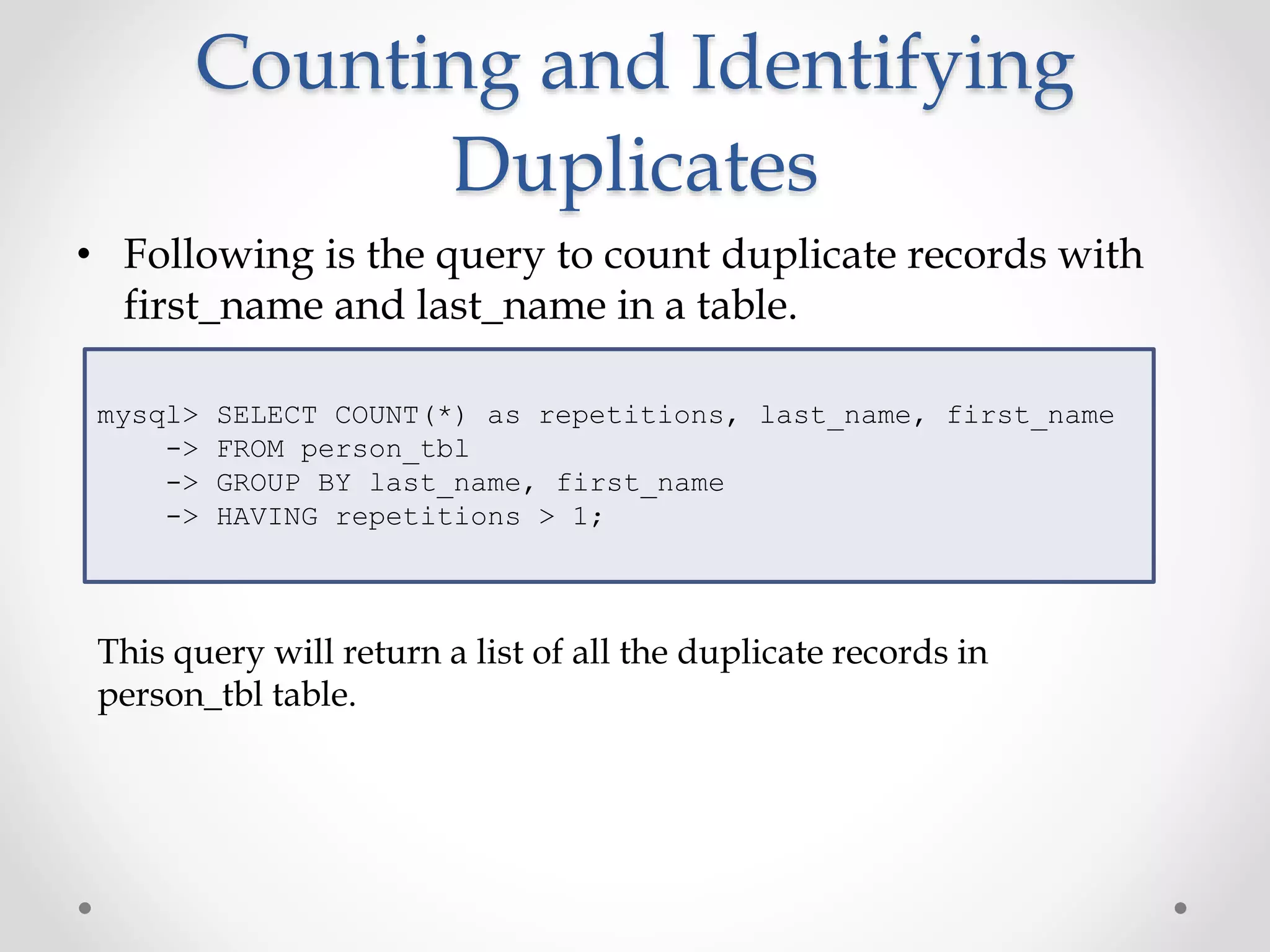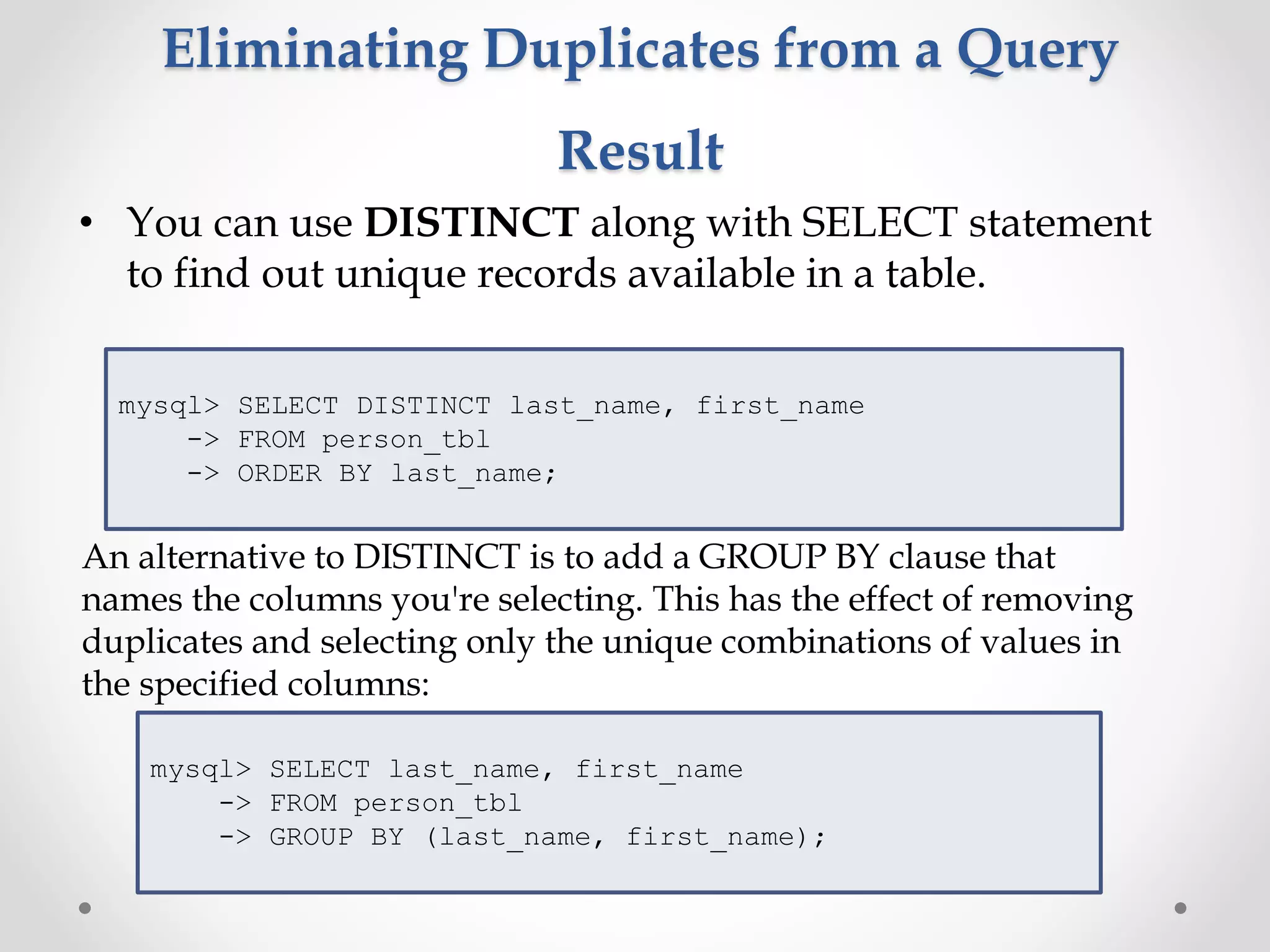This document discusses how to use sequences in MySQL databases. It describes how to define an AUTO_INCREMENT column to automatically generate unique IDs. It also covers how to renumber sequences by dropping and re-adding an ID column, start sequences at a specific value, and handle duplicate records through various techniques like PRIMARY KEY constraints, INSERT IGNORE, and REPLACE.


